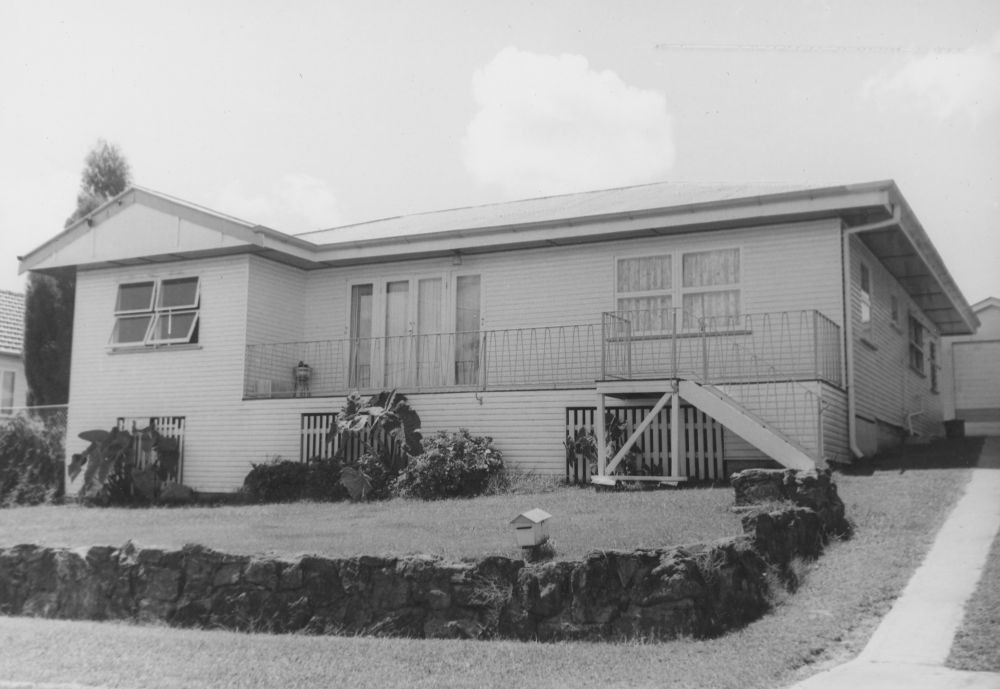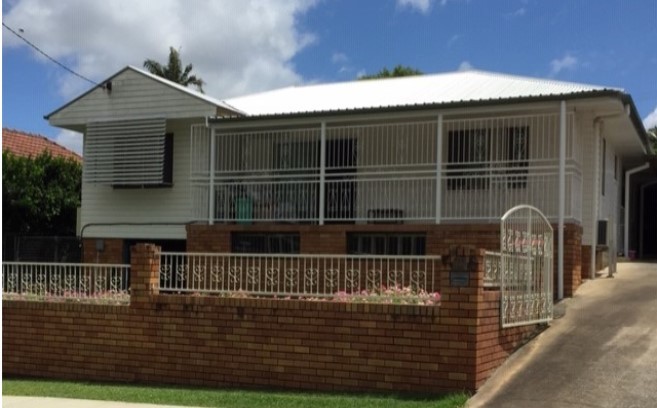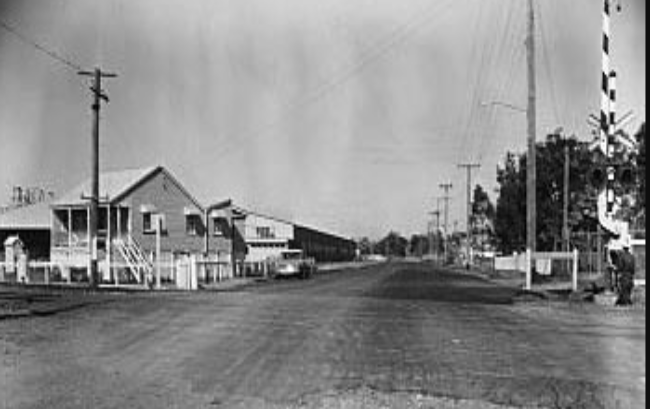Migrants in Geebung: Blaz and Rosa’s home over time
By Stephanie Ryan, Research Librarian, Library and Client Services | 6 December 2021
Rosa arrived in Brisbane in 1980 with her three children aged 3, 5 and 6. She had come from Zadar on the Adriatic coast in Croatia, formerly part of Yugoslavia. It is a part of Europe caught in changing borders and allegiances throughout history. Rosa spoke Croatian only.

The home of Blaz and Rosa in Geebung, late 1960s-early 1970s.
Corley Explorer, State Library of Queensland
Rosa’s husband, Blaz, had preceded her and purchased a home in Geebung for his family. When they joined him, this was wonderful for Rosa. Her world has always revolved around her family and home. She now had a stable place to raise her children. Part of this security was owning their home. To help pay off their house, Rosa learned English and new skills working up to three jobs, cheerfully, and in less than four years the couple owned their home.
They worked to improve their home where so many of their family occasions took place, extending at the back to provide more room for relatives and friends to gather and celebrate. They created vegetable gardens to add Croatian flavours to their food.

Rosa’s home in Geebung 2021, Photo by State Library of Queensland staff
The Corley collection of house photographs
With some help, Rosa found the photograph of her house as it was taken in the late 1960s-early 1970s, in the Corley collection. She was delighted. Frank Corley had taken photos of homes in south-east Queensland during this time and put them into cardboard frames with a calendar or greetings message. Those he did not sell to the residents he retained so that he would not have to pay sales tax. After his death the collection came to State Library.
The photographs have been digitised and are freely available for viewing and downloading via the catalogue One Search. Use the suburb name with the word ‘Corley’, then select ‘SLQ digital collections’ from the options. Follow the prompts on the top right-hand side of the screen to print the photo. If you are lucky, someone may have already identified your house and added a house number and street name, otherwise there is the adventure of discovery and the surprise of seeing the difference 50 years makes.
Not all homes will be pictured, only those in the images the Corleys did not sell. In the case of Blaz and Rosa, the Corley photo showed how hard they had worked to change their house so that it provided for their family’s needs and a comfortable, happy way of life. Rosa now has a much bigger copy of the Corley photo. It has pride of place in her home.
Geebung over 50 years ago
Geebung, where Blaz and Rosa live, was originally a dairying and farming area. It was mainly bush during the 1950s, so much so that bushfires were a problem. The Brisbane Telegraph 28 November 1951 reported, “Another fierce fire at Geebung burned out 400 acres of scrub and threatened three homes.” The suburb was developed largely after World War Two with an industrial base which included Olympic Tyres, Premier Blinds, Massey Ferguson Farm Machinery and Evans Deakin Engineering. The new housing development supplied homes for the workers, a number of whom were migrants. The home of Rosa and Blaz fits into this period. Blaz and Rosa have come a long way from the conflicts of Croatia and the oldest continuously inhabited area of Croatia, Zadar, to the quieter realms of suburban Brisbane, growing as they arrived.
Corley stories
Some surprising stories have emerged from these Corley photos, particularly in the case of migrants for whom home ownership has been a priority. They learned new skills, took new directions in their lives and achieved results which sometimes surprised them. The collection has produced a remarkable awareness of how our lives, homes and suburbs have changed and an understanding of how much our homes mean to us. Do you have any interesting stories of your home to share?
Find out more....
- Check State Library’s catalogue One Search for photographs, books and documents about suburbs and homes.
- Brisbane City Council’s Brisbane images for further pictures of homes, plans and suburbs.
- Check Can you find your home on the Corley Explorer?
- Explore the Corley Explorer and find some fascinating stories and pictures
More information
One Search - http://onesearch.slq.qld.gov.au/
Ask us - /plan-my-visit/services/ask-us
Comments
Your email address will not be published.
We welcome relevant, respectful comments.

